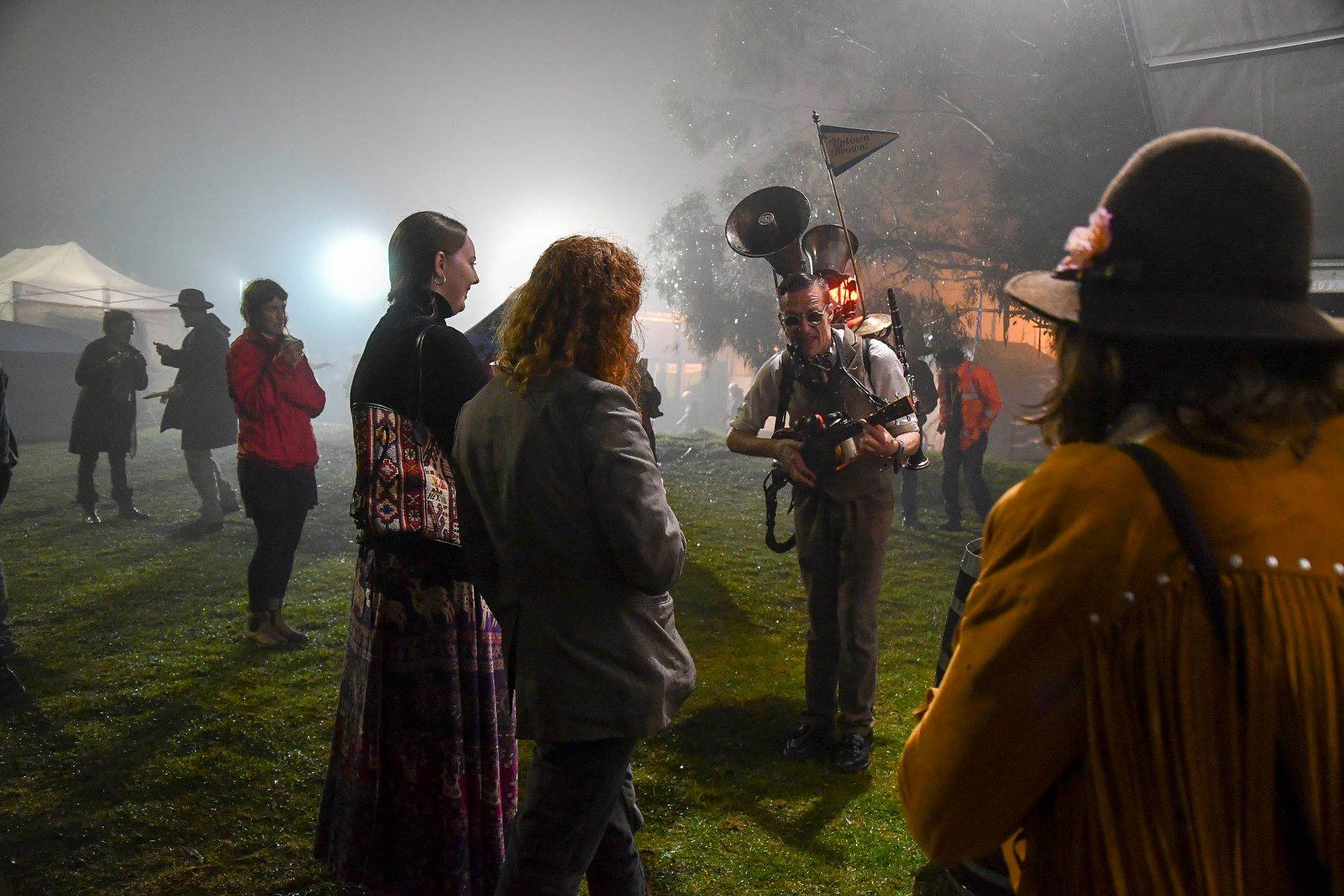Festival Site
The Festival precinct is bounded by Lurline, Merriwa, Ada and Waratah Streets, incorporating Katoomba Public School, The Clarendon Guesthouse & Theatre and Katoomba RSL.
The festival site is compact and well planned - no more than a minutes walk from one stage to another, or 2-5 minutes walk to the many nearby cafes and restaurants.
There are seven stages ranging from the intimate Clarendon Cabaret Room to the Big Top.
Getting to Katoomba
Driving: By road Katoomba is 1.5 - 2 hours from central Sydney along the M4 and the Great Western Highway. It can sometimes be quite busy on the weekends so if you’re coming up on Saturday or Sunday leave early as you may need the extra time.
Trains: Trains leave from Sydney Central Railway Station for Katoomba almost every hour. Visit the Transport for NSW website and check out the timetable for Blue Mountains line. Please check with Transport for NSW for updates and information about your journey in case there are timetable changes or trackwork.
Katoomba is a major tourist destination so accommodation and eateries to suit every budget are available. If you are planning to stay in the Blue Mountains for the Festival and need to book accommodation we recommend you make your arrangements well in advance of the Festival weekend.
The Greater Blue Mountains World Heritage Area is located within the Ngurra (Country) of six First Nations being the Darkinjung, Dharawal, Dharug, Gundungurra, Wonnarua and Wiradjuri Traditional Owners.
This Traditional Ownership was never ceded or surrendered and the relationships with and profound care for Ngurra (Country) that Gundungurra and Dharug Traditional Owners still hold continues today.
The Setting
Katoomba sits on the edge of a UNESCO World Heritage-listed wilderness. It is the most visited town in the Blue Mountains and the world-famous Three Sisters and the other panoramas and bushwalks are amongst Australia's most popular tourist attractions. A little to the west are the magnificent Jenolan Caves. Katoomba became known as a town in 1879 with the opening of a coal mine. The railway station was originally named The Crushers for its mining activity.
Coal and shale mining went on into the early twentieth century, but it was city folk coming up to take the air and dance the night away in the many guesthouses that kept the place on the map after that.
Another reason to linger in Katoomba now is the stunning new Cultural Centre which contains the Blue Mountains City Art Gallery, the World Heritage Exhibition and the new Katoomba Library.
The town is rich with architectural interest, with the Carrington, its grand Victorian era hotel, Art Deco 1920s boomtime buildings and scattered everywhere the much loved old miners' cottages and Federation bungalows. The huge choice of restaurants and cafes with some of the best coffee in the world hum with contented customers and a new surge of live music.
The upper mountain towns each hold a swag of bookstores, antique and bric-a-brac palaces, art galleries and op shops.
The Blue Mountains is a magical place any time of the year. Glowing in autumn, cool in winter, colourful in spring and refreshing in summer. It is a special place of ancient landscapes, towering golden-hued stone escarpments, crashing waterfalls and magnificent eucalypts all set amongst inspiring scenery that will take your breath away.
Combine the scenic wonders with the best folk, roots, blues and indie music that the world has to offer and you may not want to go home. Some people don't.





